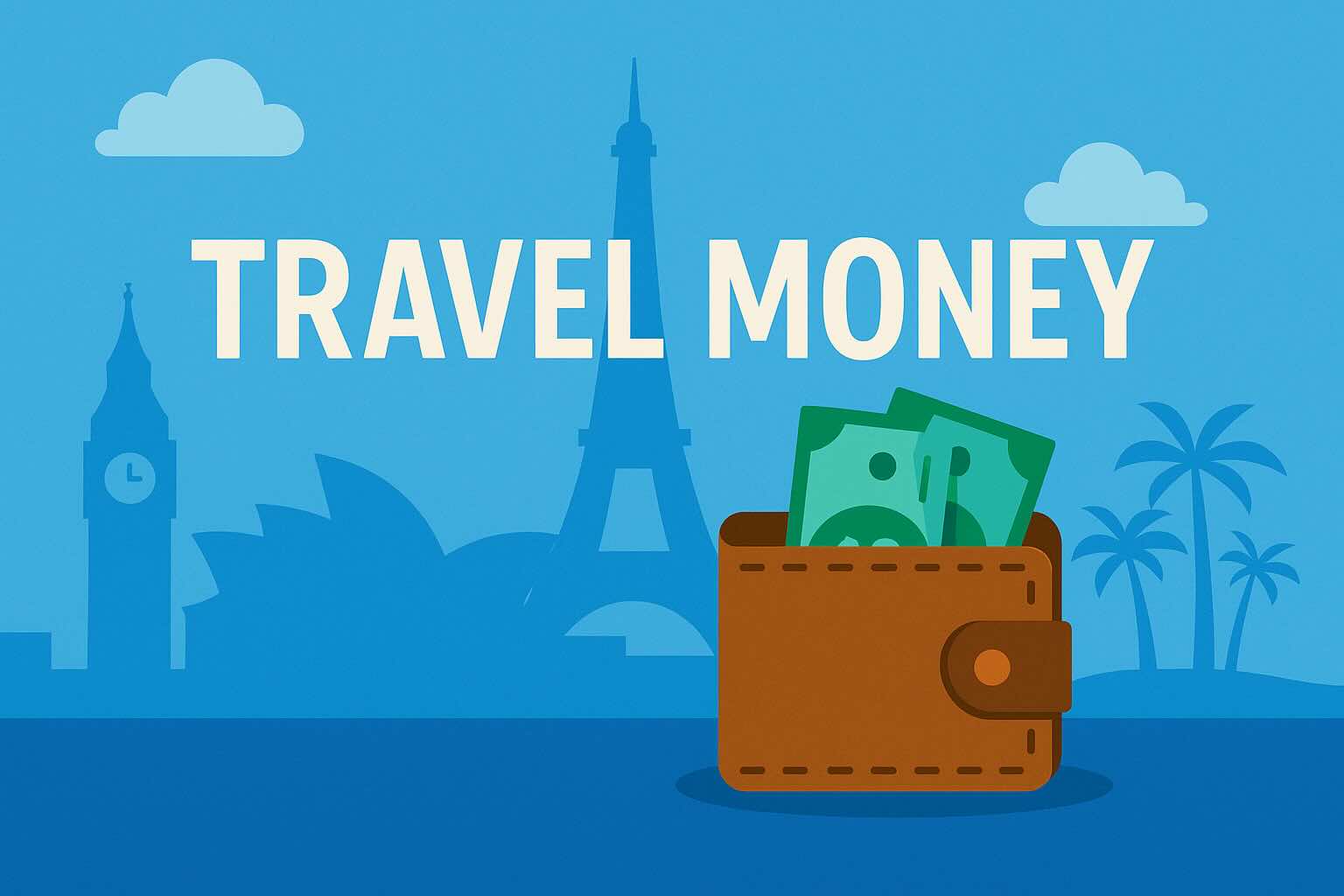Travel Money - Which is Best? Cash or Cards
Multi-currency travel cards are one of the best ways to spend overseas without high bank fees. Learn how they work, their key benefits, and what to watch out for when choosing a travel card for your next trip.

Travel Money – Which Is Best? Cash or Cards?
Planning your travel money options is one of the most important—and often most overlooked—parts of getting ready for an overseas trip. Leaving it until the last minute can lead to unnecessary fees and poor exchange rates that eat into your travel budget. So, what’s the best way to manage your money while abroad—cash, travel cards, or credit cards?
Let’s break it down and help you avoid the most common travel money mistakes.
⸻
💸 The Cost of Convenience
Too many travellers land at a foreign airport only to realize they need cash for a taxi or a quick bite—and end up exchanging money at a kiosk with terrible rates and high fees. Others might rely on their regular credit card without knowing about hidden foreign transaction charges or ATM withdrawal costs.
💡 A little planning ahead can save you 5–10% or more on your total spend abroad.
⸻
💵 Option 1: Foreign Cash
Having local currency on arrival is still essential, especially in destinations where cards aren’t accepted everywhere (markets, taxis, small restaurants).
Pros:
• Useful for tipping, transport, and emergencies
• Accepted almost everywhere
• No tech required!
Cons:
• Risk of theft/loss
• Bad rates at airports or hotels
• Limited tracking of spend
💡 Pro Tip:
Order foreign cash online from trusted providers to get much better exchange rates than at the airport. You can often collect it at a branch or airport location.
⸻
💳 Option 2: Prepaid Travel Cards
Travel cards let you load money in foreign currencies before you leave. They often offer better rates than credit/debit cards and protect you from currency swings.
Pros:
• Lock in exchange rates before you travel
• Avoid credit card interest or debt
• Replaceable if lost or stolen
• Often better for budgeting
Cons:
• May include reload fees or inactivity fees
• ATM withdrawals can still incur charges
• Can be slow to reload on the go
⸻
🏦 Option 3: Credit & Debit Cards Abroad
Using your existing credit or debit card is convenient, but it comes at a cost.
Common Fees to Watch Out For:
• 1–2% currency conversion fee from the card network
• Up to 3% foreign transaction fee from your bank
• ATM withdrawal charges, often flat fees or percentages
• The “Dynamic Currency Conversion” (DCC) trap – where merchants let you pay in your home currency at a poor rate
🛑 Always decline DCC and choose to pay in local currency to avoid inflated exchange rates.
⸻
🧠 So, Which Travel Money Option Is Best?
Option Best For Watch Out For
Foreign Cash Small expenses, emergencies, markets Poor airport rates, risk of theft
Travel Cards Budgeting, locking in rates, security Fees, reload time
Credit Cards Larger purchases, emergencies High fees, DCC trap, interest charges
⸻
✅ Final Tips to Travel Smart
• Mix it up: Take a small amount of cash + a travel card + a backup credit card
• Set up rate alerts to exchange at the best times
• Check card fees before you go and explore low-FX-fee options
• Use providers like Wise, Revolut, or Travelex for better control and rates
⸻
🔍 Learn more:
• Compare Travel Cards and Prepaid Options
• How to Avoid Credit Card FX Fees Abroad
• What Is Dynamic Currency Conversion?
⸻
Let me know if you’d like this turned into a downloadable checklist, infographic, or landing page content!
When planning an overseas trip figuring out how to access your money while away is complicated and often left to the last minute. You then end up arriving in airports needing to change money to pay for the taxi fare into your hotel.
End result is you get terrible exchange rates and pay high fees for changing foreign cash and unexpected fees on your credit card for making purchases or withdrawals overseas.
You can save money and get better exchange rates by ordering your foreign cash online online, you get better rates but can still pick up the cash and a branch or the airport. This will give you more money in your hand for all those overseas expenses and purchases. Another option is to use a Pre-paid Travel Card.
Credit Card provider will typically charge 1% to 2% from the market mid-rate. Then your bank may also charge an extra 3% on top of this as a “Overseas Transaction Charge”. Additionally there may be a “Overseas ATM” Fee when taking money out of ATMs abroad.
Read more about the fees and exchange rates on using credit cards overseas and about the importance of avoiding the direct currency conversion rip-off!
Disclaimer: Please note any provider recommendations, currency forecasts or any opinions of our authors should not be taken as a reference to buy or sell any financial product.
